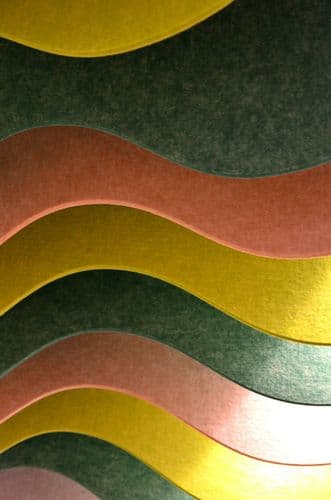Key Points
- Uses cellulose to create structural colour, avoiding mica, titanium dioxide and synthetic dyes; designed to be biodegradable and non-toxic.
- Colour and durability are tuned by controlling cellulose morphology and aggregation, aiming to meet industry colourfastness without petrochemical additives.
- Brightness/opacity typically delivered by TiO₂ are approached via optical engineering of cellulose; covering power remains application-dependent.
- Claimed lifecycle gains come from renewable feedstocks and reduced hazardous chemistry; end-of-life degradability supports circularity (independent LCA disclosure will be critical).
- Initial focus on cosmetics, fashion, coatings and packaging, aligning with tighter substance restrictions and demand for compliant, high-performance, plastic-free colourants.
Full interview with Sparxell
Can you explain the core technology behind Sparxell's biodegradable pigments and how it represents a shift from traditional pigment production methods?
Sparxell leverages cellulose, a renewable plant-based material, to innovate biodegradable pigments, marking a significant shift from traditional pigment production that relies on synthetic chemicals that may also be mined.
This approach aligns with sustainability trends and addresses the environmental impact of pigment production by offering a biodegradable alternative. This advancement demonstrates the feasibility of using eco-conscious materials without quality compromise, setting a new standard for sustainable innovation in the pigment industry.
With the exclusion of mica, titanium dioxide, and dyes from your pigments, how do you ensure that the performance and quality meet the industry standards, especially in applications requiring high durability and colorfastness?
Thanks to its bioinspired aspects, Sparxell's technology units are sustainable and perform for the first time. To ensure our biodegradable pigments meet industry standards for applications requiring high durability and colour fastness, despite excluding mica, titanium dioxide, and dyes, we focus on manipulating cellulose's physical properties, in a similar manner to what nature has evolved over millions of years, using a self-assembly process.
By controlling the size, shape, and aggregation of cellulose particles, we can achieve desired colour properties and durability. Our high colour fastness results from the absence of traditional dye and our approach include innovative formulation strategies and performance testing to optimise the pigments for various applications.
With the absence of titania and the use of cellulose, how do you address the technical and aesthetic demands of industries accustomed to the brightness and opacity that titanium dioxide offers?
With the absence of titania, our approach to addressing the technical and aesthetic demands traditionally provided by titanium dioxide involves innovative manipulation of cellulose's physical properties.
By precisely controlling the properties of the constitutive cellulose in our products, we can tailor the optical properties of our pigments to mimic the desired effects of brightness and opacity. This process allows us to achieve a wide range of colour properties and maintain the durability required by various industries.
Can you discuss the environmental impact of conventional synthetic pigments and contrast that with the lifecycle impact of Sparxell's cellulose-based pigments?
The environmental impact of conventional synthetic pigments is significant, it requires a holistic understanding of the sourcing, transformation, use, and end-of-life of traditional materials used for colouration. It often involves the extraction of non-renewable resources, energy-intensive production processes, and the use of non-biodegradable or even hazardous chemicals, leading to pollution and health risks. These pigments, once used, can contribute to long-term environmental degradation due to their non-biodegradable nature, accumulating in ecosystems and potentially causing harm to wildlife and humans.
In contrast, Sparxell's cellulose-based pigments represent a paradigm shift towards sustainability. Our pigments are derived from renewable resources, cellulose, which is abundant and biodegradable and may even be sourced from waste feedstock like agricultural waste. The production process of these pigments is designed to be energy-efficient and eliminate the use of harmful and polluting chemicals, significantly reducing the environmental footprint. Furthermore, at the end of their lifecycle, Sparxell's pigments can be easily broken down by natural processes, mitigating pollution and contributing to a circular economy.
How does Sparxell's innovation align with global regulatory and sustainability trends, especially considering the increasing scrutiny over the use of hazardous substances in manufacturing?
Sparxell's innovation aligns closely with global regulatory and sustainability trends by offering biodegradable, non-toxic pigments as a response to stricter environmental regulations and the increasing demand for sustainable products. This approach not only meets evolving standards but also positions Sparxell at the forefront.
Furthermore, Sparxell's commitment to the entire lifecycle of its pigments, from sourcing to degradation, supports circular economy principles, highlighting its role as a leader in sustainable practices.
Looking at the current statistics and trends in the synthetic pigments market, where does Sparxell position itself, and what market shifts do you anticipate as more companies adopt sustainable practices?
Sparxell aims to position itself as the pioneering and sustainable choice for the industry, targeting sectors that prioritize performance and sustainable materials such as fashion, cosmetics, paint, and packaging.
As global awareness and regulations push for more sustainable practices, a notable shift is expected towards less harmful alternatives. Companies are increasingly seeking out green alternatives that do not compromise performance. Sparxell's commitment to sustainability and innovation places it at the forefront of this transformation.
Finally, what is your vision for the future of Sparxell and the pigment industry at large?
By pioneering innovations in biodegradable materials, Sparxell aims to redefine industry benchmarks for sustainability and performance in the coloured material space. Sparxell's vision encompasses leading the shift towards more sustainable pigment production. This vision extends to catalysing a broader industry-wide shift, moving away from dependence on synthetic, mined, fossil-based and non-renewable resources to embrace a more sustainable yet performant approach.
The future Sparxell envisions for the industry is one where sustainable practices are not just preferred but standard, fostering a world where the environmental impact of colourants is minimised, and sustainability is at the core of every product.
About Sparxell
Sparxell creates the next generation of colours and effects. They are pioneering the world's first plant-based performant colourants inspired by nature. Their bioinspired technology platform empowers brands to meet evolving regulations and consumer trends toward sustainable yet performant products. Their innovative products deliver colour vibrancy and effects usually obtained from metals, minerals and dyes often combined with plastics. They transform industries like cosmetics, fashion, packaging, and more, combining biodegradability, non-toxicity, and a low carbon footprint with the best optical performance.







